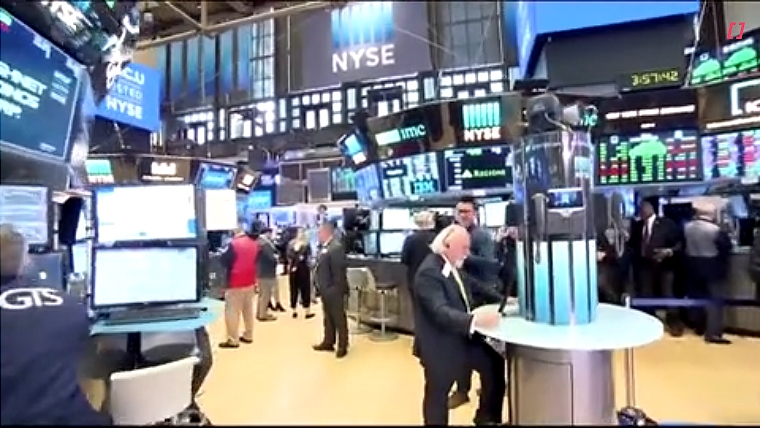
Against a backdrop of light newsflow, global rates continue to rise to levels not seen in more than a decade, driven by higher long-term rates resulting in curve steepening. The NZ 10-year government bond broke up through the 5% mark yesterday. In currency markets, focus remained on the struggling yuan, which pushed the NZD and AUD down to fresh lows, with some relief after reports of increased Chinese state intervention.
The global bond market selloff has extended, with rates reaching levels not seen for more than a decade in some cases. The US 10-year rate traded as high as 4.325% overnight, within a basis point of the 2022 high, while the 30-year rate reached 4.42%, breaking above last year’s high, to reach its highest level since 2011. The 2-year rate has been contained just under 5%, making the curve steeper. Higher long-end rates have pushed the US 30-year mortgage rate up to a 21-year high of 7.09%, according to mortgage lender Freddie Mac.
Half of the damage was done during NZ trading hours, with the current US 10-year rate of 4.31% only a couple of bps higher from where we left it yesterday. The UK 10-year rate is up 10bps to 4.75%, a level not seen since 2008 while European 10-year rates are up in the order of 6bps.
There has been no particular trigger for the move higher over the past 24 hours, just an accumulation of things that have been weighing on the market for some time, such as lingering questions about how quickly underlying global inflationary pressure will take to fall and how much tighter central banks might need to take monetary policy. Despite higher yields, the backdrop is one of ample supply to more than meet current demand. Not helping sentiment, Japan’s 20-year bond auction met tepid demand, with the auction tail (the difference between the average and cut-off price) reaching its longest since 1987.
Higher global rates are feeding into higher NZ rates. NZGBs closed up 9bps across the curve yesterday, taking the 10-year rate up through the 5% mark for the first time since 2011, closing the day at 5.05%. Higher rates running into the afternoon meant that there was good demand at the government’s bond tender, particularly for the longer maturities on offer. NZGBs outperformed swaps, with the latter up 11-13bps between 2 and 10-year maturities. While the 2 and 10-year rates didn’t see fresh highs for the cycle, the 5-year rate closed at 5.08%, its highest level since 2010.
Overnight data releases didn’t really move the dial, with initial jobless claims in line with the consensus at 239k for last week, consistent with a flat trend and some underlying resilience in the US labour market. The Philadelphia Fed index unexpectedly rose to a 16-month high of +12, going against the lower Empire manufacturing index earlier in the week. It wasn’t all positive though, with employment and capex indicators both weaker.
Higher bond yields have weighed on global equities, with the S&P500 currently down 0.4% after a positive open and the Euro Stoxx 600 index fell 0.9%. Of economic interest, Walmart reported a strong quarter, attracting budget-conscious shoppers, with its “in-home” food options doing better as consumers dialled back spending at restaurants. The CEO said that “Jobs, wages and pockets of disinflation are helping our customers, but rising energy prices, resuming student loan payments, higher borrowing costs and tightening lending standards, and a drawdown in excess savings mean that household budgets are still under pressure”.
In currency markets, the PBoC amped up its attempt to support the yuan, with a CNY fix at the greatest premium to market estimates since October. Such moves are only slowing the rate of depreciation, against fundamental forces that are resulting in a depreciating currency. USD/CNH traded up towards a fresh high of 7.35 but late in the day there were reports of Chinese authorities telling state-owned banks to step up intervention in the currency market and considering cutting banks’ FX reserve requirements. USD/CNH promptly fell to 7.30 after the report and it has settled close to 7.31 overnight.
Part of the motivation is to prevent CNY/JPY from sustainably pushing up through 20, so that China can maintain export competitiveness against Japan, with the BoJ’s policies serving to weaken the yen. On that note, USD/JPY hit a fresh nine-month high over 146.55 yesterday and it currently trades at 146.20.
A weaker yuan and a weaker than expected Australian employment report saw the NZD trade down to a fresh low of 0.5903 yesterday. The recovery in the yuan helped it to regain the 0.5960 level overnight, but it has been slipping over the past few hours to trade at 0.5920.
Australia employment fell 15k in July, driving the unemployment rate up 2 ticks to 3.7%, back to the top of the 3.4-3.7% range it has oscillated in for just over a year. The data cemented in views that the RBA will keep policy on hold next month. There was only a passing impact on the rates market while AUD weakness extended, with the added weight of the weaker yuan. The AUD traded down to as low as 0.6365, before recovering back up through 0.64 overnight and currently near that level. NZD/AUD rose 30 pips or so after the employment report, but has settled back to around 0.9250.
NZD/GBP and NZD/EUR continue to grind down to fresh multi-year lows, trading at 0.4650 and 0.5450 respectively.
In the day ahead, the calendar is light. Japan CPI inflation figures are expected to show signs of consolidation at well above-target levels while UK retail sales data are released tonight.

We welcome your comments below. If you are not already registered, please register to comment.
Remember we welcome robust, respectful and insightful debate. We don't welcome abusive or defamatory comments and will de-register those repeatedly making such comments. Our current comment policy is here.